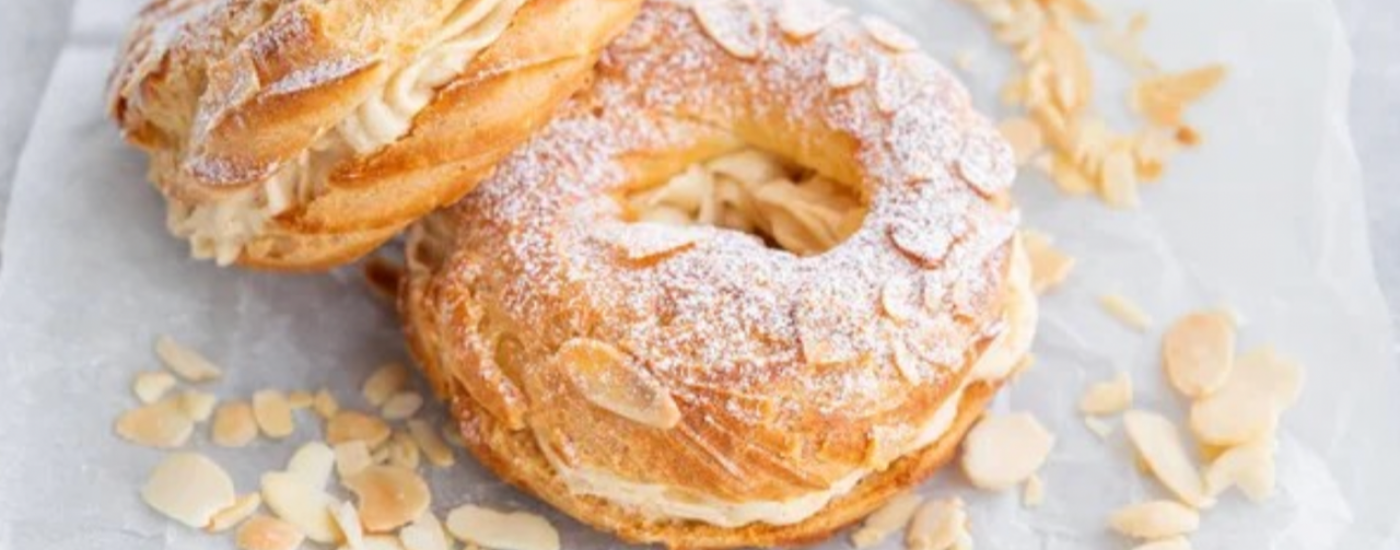A good idea to add to your to-do list for your next trip to France: pastry tasting.
A little etymology
First of all, the word pâtisserie refers to two things: the cakes and the shop where you can buy them.
You go to a patisserie to buy pastries, and they are made by a pastry chef.
The origin of the word "pâtisserie"? It's not very hard to find for those with a sweet tooth: it's the Latin word "pasta", which is still used today.
By the way, did you know that the circumflex accent on the "â" indicates that there was originally an "s", but that it has now disappeared?
The difference between a bakery and a patisserie
Bakeries mainly offer bread and Viennese pastries (croissants, pains au chocolat, pains aux raisins, etc.), as well as cookies, biscuits and so on.
When it says "Boulangerie-pâtisserie", you'll find bread, viennoiseries and classic French pastries.
If you don't see the word "Boulangerie", just "Pâtisserie", you're unlikely to find a baguette, but you've come to the right place if you're looking for a birthday cake.
What are the classics of French patisserie?
There are so many, you'll probably have to make several trips to France to try them all.
Here are a few selected according to French preferences.
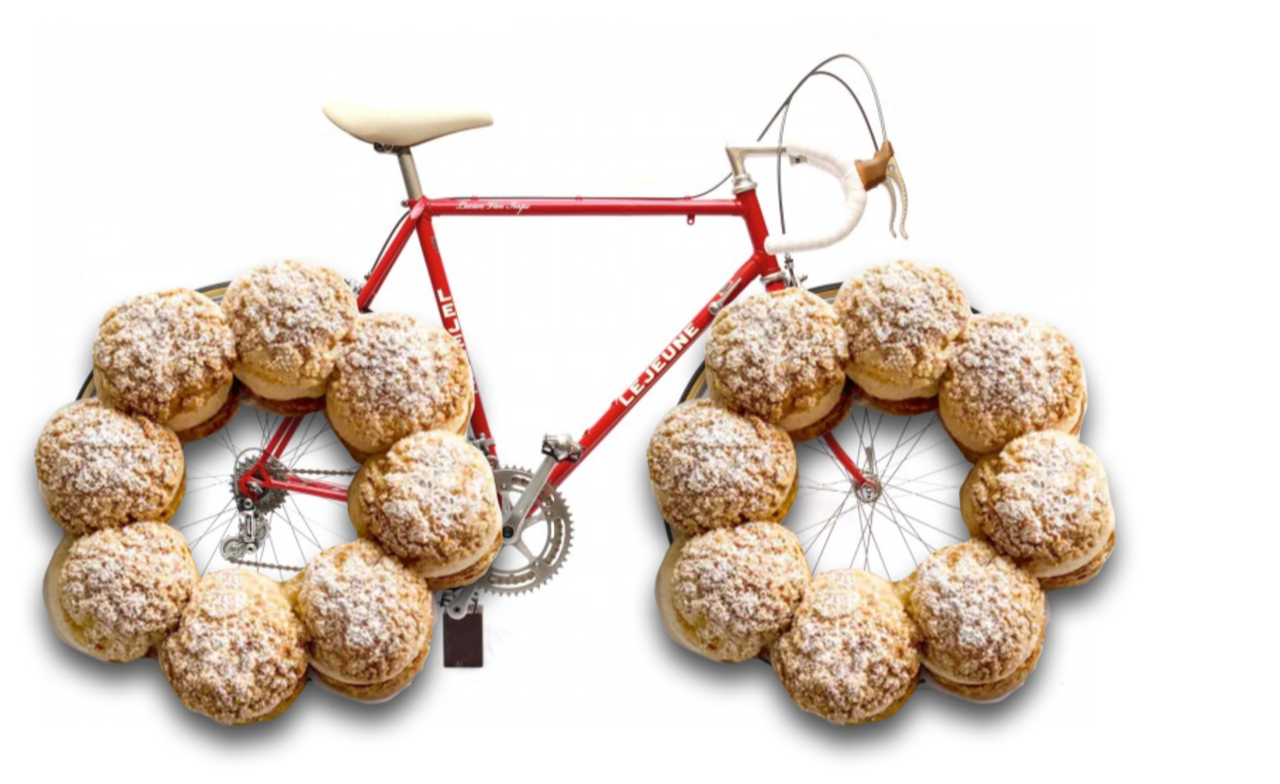
The Paris-Brest
The Paris-Brest is a traditional pastry in the shape of a bicycle wheel, in honour of a race between Paris and Brest (in Brittany). It's made with a crunchy choux pastry filled with a praline mousseline cream and sprinkled with flaked almonds.
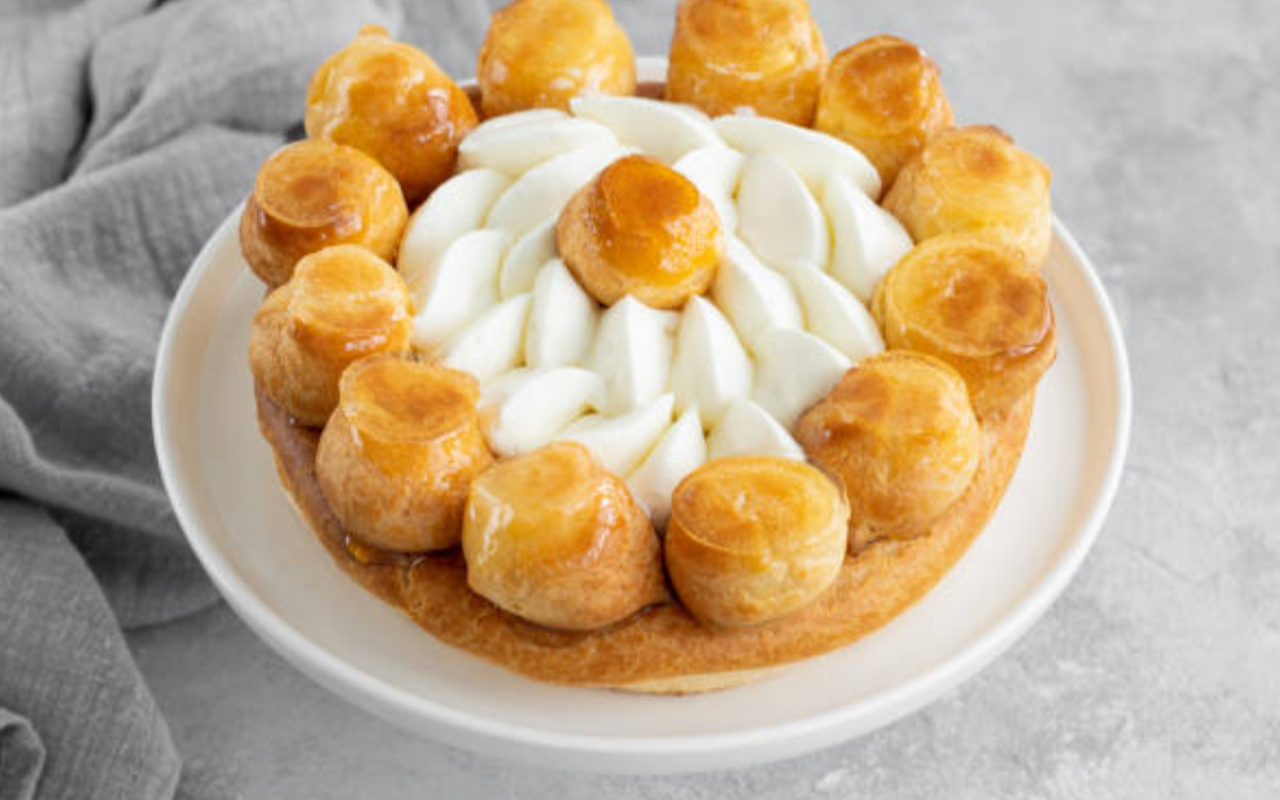
The Saint Honoré
The Saint Honoré is a French pastry made with Chantilly cream, chiboust cream and sugar-glazed choux pastries. The Saint-Honoré was created by the Parisian pastry chef Chiboust in 1840. He named his cake after the rue Saint-Honoré, where his business was based.
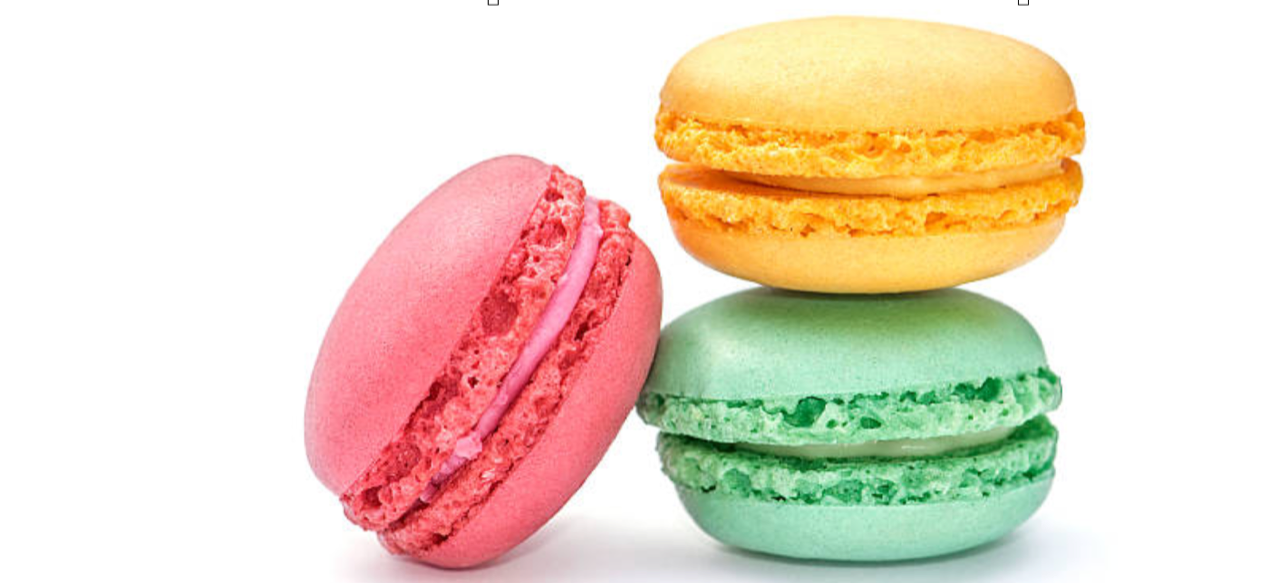
The Macaron
The macaron is a small French almond cake, grainy and moist, with a rounded shape, about 3 to 5 cm in diameter, derived from the meringue.
It is made from almond powder, icing sugar, sugar and egg whites, the quantity of almond having to be equal to the quantity of icing sugar. The best-known macaroon today is the Parisian macaroon.
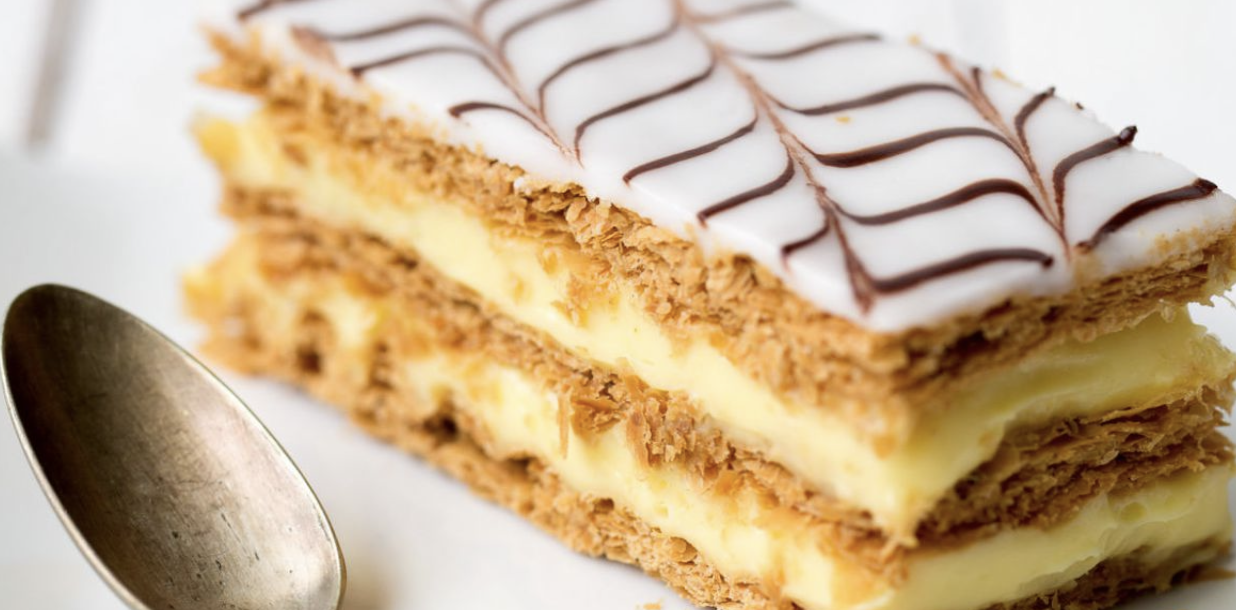
The Mille-Feuilles
A mille-feuilles, or millefeuilles, is a pastry for which there is no need to look up the etymology of the name. It's easy to see what we're talking about :-)
A mille-feuille is made up of three layers of puff pastry and two layers of pastry cream. The top is glazed with icing sugar or fondant. The French name for this pastry refers to the large number of pastry sheets that make up each cake. Given the traditional method of preparing puff pastry, in six stages of folding in three, the mille-feuille actually has 729 pairs of pastry sheets!
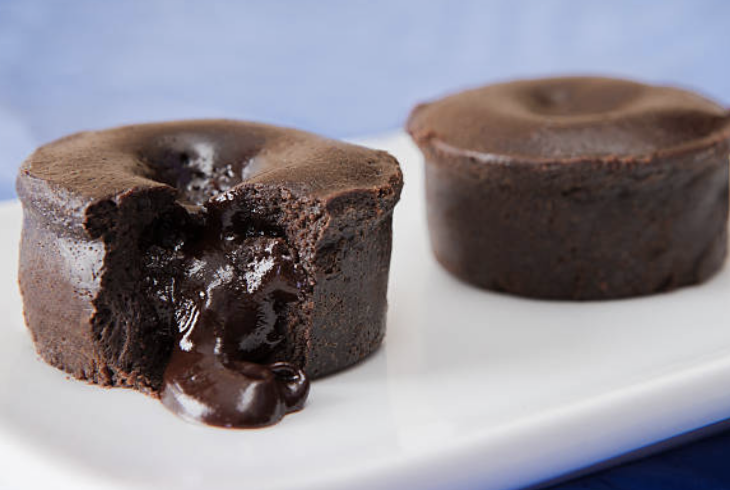
The chocolate mi-cuit (or fondant)
Originally created by Michel Bras, a great chef based in the Aubrac mountains, the mi-cuit is made by quickly baking a chocolate moelleux, revealing a runny centre beneath a baked exterior.
It's what's known as a "minute dessert": it has to be prepared at the last minute, served on the plate, hot, straight from the oven. A real treat!
The trick is to insert frozen ganache into the pastry.
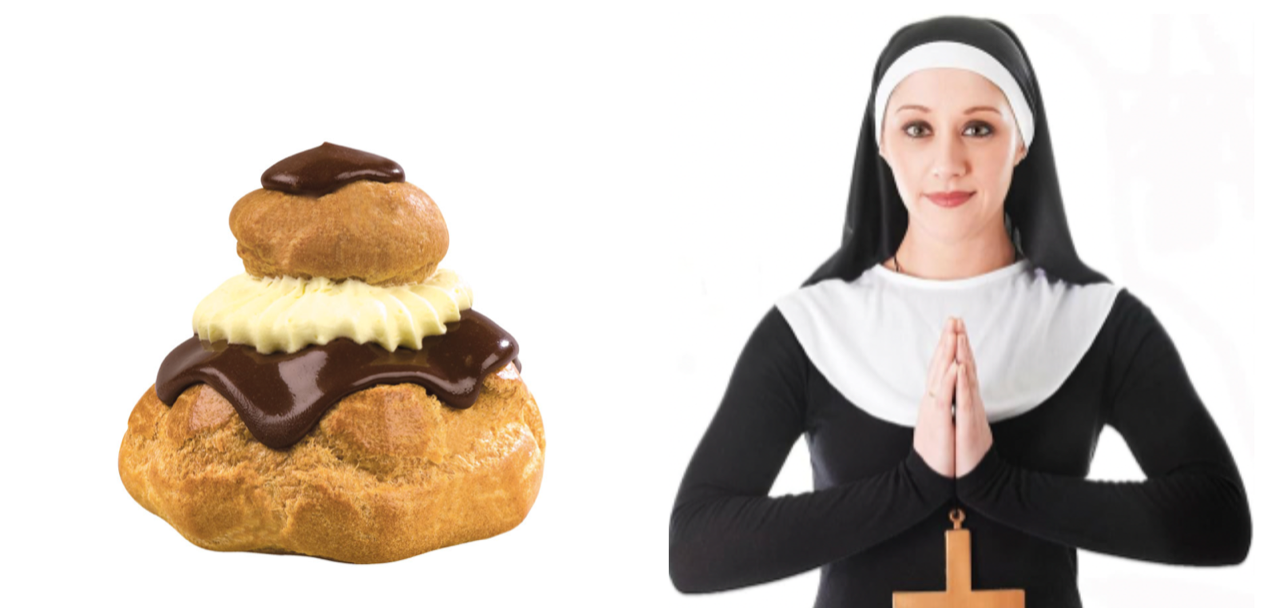
The éclair or religieuse
An éclair, formerly known as pain à la duchesse (before 1850) or petite duchesse, is a pastry made from choux pastry filled with vanilla-flavoured custard and covered with icing on top.
The recipe for religieuse is the same as for éclair, except for the presentation. The religieuse is made up of two choux pastries placed one on top of the other, with the top choux, which is supposed to represent the head, being half the size.
Pasta
When you're interested in pastry-making, it's very important to distinguish between the different
types of dough.
⁃ Shortbread dough
⁃ Sweet dough
⁃ Shortcrust pastry
⁃ Puff pastry
⁃ Choux pastry
And many more besides!
If your pastry isn't made properly, it's a bit like if the foundations of a house weren't solid. The whole thing could collapse. What's more, some doughs are quite complicated to make because they are very sensitive to temperature and humidity.
Chemist or architect?
It's important to understand that pastry-making is like chemistry. The different ingredients all have a very precise function in achieving the final result. Eggs are the binder; sugar is the flavour. Butter makes the dough waterproof; it makes the cakes crispier and crumblier.
Just a few degrees away and it could spell disaster, and your custard will end up in the sink. Not enough humidity in the air and your brioche dough won't rise. On the other hand, too much humidity and your choux or meringues will go soft.
Pastry-making is also architecture. Each cake is a construction; it must offer real harmony and, of course, appeal. You eat with your eyes first :-)
Would you buy a cake if it wasn't pretty?
Today's pastry chefs vie with each other in their creativity to 'revisit' (modernise) the classics.
Combining flavours
Patisserie is also a fantastic playground for:
1/ discovering new flavours
2/ combining flavours
These days, products come from all over the world, and it's not uncommon to taste pastries with ingredients from the other side of the world. Mango, passion fruit and ginger have already joined many traditional recipes, but have you heard of Yuzu or Kalamansi, the "new" citrus fruits that are awakening our taste buds?
Alongside the arrival of flavours from far-off lands, the curiosity and creativity of our chefs have led them to surprise us with combinations that are as original as they are delicious. Thanks to chef Jacques Genin, basil has become the favourite companion of lime. Rosemary, for its part, is an exquisite alliance with apricot.
Textures
In patisserie, the marriage of flavours is obviously essential, but that alone is not enough.
A pastry should offer a wide enough mix of textures to surprise the palate.
Ideally, if a cake is creamy, it should also offer little crunchy notes.
This is the principle behind Mille Feuilles, for example, which is both creamy and crunchy in the middle and soft on top.
The most fashionable expression is undoubtedly "crunchy-crisp", democratised by chef Cyril Lignac in the hit TV show "TOP CHEF".
Patisserie for everyone
When it comes to pastries, "there's something for everyone": some prefer the bitterness and crunch of dark chocolate, while others go for a vanilla flan.
Pastry chefs are also listening to new sensibilities and are offering more and more vegan and/or gluten-free creations.
Pierre Hermé, the French pastry chef de fil, recently published a collection of vegetarian recipes in partnership with Linda Vongdara in which he uses exclusively vegan ingredients; in a recent interview, he admitted that some were even better than the originals.
Our team would like to share some of the best addresses in Montpellier with you:
- Pâtisserie Scholler
- Pâtisserie Bonnaire
- Maison L'Oeuf
- Pâtisserie Ortholan
- Les Demoiselles de Montpellier (pâtisserie végétale)
- L'Empire des Sans (pâtisserie végétale et sans gluten)
At the school, we organise French language courses and offer you a comprehensive cultural programme. We also regularly organise wine, beer, chocolate and cheese tastings so that you can discover some great French products.
Happy tasting!
The Accent Français team

